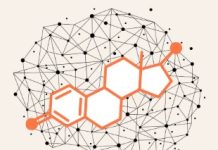South Karelia Social and Health Care District (Eksote) provides publicly funded social and health care to 133 000 citizens of South Karelia in South-Eastern Finland. Eksote’s strategy includes reducing the use of institutional care and emphasizes providing rehabilitation to those who need support services and institutionalised housing to strengthen their functional abilities. Improvement in functional abilities increases the quality of life and decreases the need and costs of social and health services.
Eksote’s Armila hospital has been transformed into a rehabilitation centre to implement strategy in practice. Rehabilitation centre’s mission is to rehabilitate the functional ability lost by illness or injury. Vision: More functional ability to rehabilitee.
Implementing change
There are five hospital-like wards in the Armila rehabilitation centre. The personnel have been trained according to Lean to continuous improvement and learning. The change in operation has included following steps.
- Reasons behind the strategy were explained by managing director and the upper management, including pointing out the central role of the rehabilitation centre and Lean transformation in delivering the change. Goals were linked to Eksote’s organisational change.
- Meeting personnel individually to go through vision, change and Lean-change.
- Teaming personnel into eight teams. Recruiting managers and team leaders.
- Defining how to measure reaching targets. Defining sub-targets and indicators for 2014. Using scorecard. (Annex: Chosen performance indicators.)
- Providing basic level of understanding of Lean to all personnel. Each team receives a 3-day Kaizen training with 3 related follow up days. Training includes eg.
- Clarifying present state, defining work that adds value, defining desired state, value stream mapping, problem solving skills, defining the most significant problems, visualisation of a team’s rehabilitee process on visualisation board, visualisation of management, Hoshin Kanri.
- 5S utilised in all wards. Standardised operating models in all patient processes and meetings. Audits.
- Training and visualisation of continuous improvement. The daily work of managers, the team responsibles, team leaders of the rehabilitation centre. Supporting teams. Management team.
- Toyota Kata (piloted, training begun).
Visualisation has been utilised in monitoring the rehabilitation process and patient results. Time and money have been invested in training while equipment or software investments have not been made.
Improved way of doing things
The new way of doing things is stabilizing after two years. Stability is depending on the leadership of the twelve team leaders and managers as well as time and success of training invested in it. The focus in year 2016 is on coaching management style.
The change within Armila rehabilitation centre has been significant. (Annex: Results) The quantity of added value (productivity) has doubled. Patient and client orientation has improved based on the feedback received from the rehabilitees. The personnel spends less time on computer.
Lean and organisation’s strategy
Rehabilitation centre implements Eksote’s strategy. Eksote’s new strategy (2014) states, inspired by the good example set by the rehabilitation centre, that “Coaching management and different operation development methods such as Lean management and knowledge management are used to support the implementation of the new service strategy”.
Lean and management culture
In the rehabilitation centre the team leaders act as coaching managers and continue to learn the management style. Leaders follow their daily time usage and report the time that adds value to the teams on the management visualisation board. The indicators and results of the rehabilitation centre are also visible to the upper management on visualisation board in real time.
Personnel welfare and know-how
Work satisfaction has improved since 2014 in the rehabilitation centre as a whole from 3.29 to 3.38 and leadership from 3.27 to 3.64 (scale 0 to 5). Sick leaves are reduced by 8.5%.
The need of using emergency or hospital services again within a month from being discharged from the rehabilitation centre is reduced to one third (15% to 5%) in the best months.
Networks
Armila rehabilitation centre and home care have lead a joint in-home palliative care development project. Palliative care readiness has improved in home care. In-home palliative care nurse, palliative policlinic nurse and doctor and nurse working in palliative care ward all utilise shared visual board in developing the care and in monitoring and developing palliative care patient process. Visual board is utilised also by different actors such as social work.
Early discharging from the Armila rehabilitation centre relieves the pressure in secondary care in freeing the beds to the emergency room patients queuing to ward.
Using Lean and gained experiences in improving processes
In 2016 Lean is used in developing faster access to treatment for endoprosthesis patients. The goal is to halve the waiting time. Hip fracture rehabilitation standardization has been in use since spring.
Lean is utilised nationwide in different organisations. Armila rehabilitation centre has facilitated and trained other organisations based on their own experiences.
South Karelia Social and Health Care District
Jouko Saramies
Director of Armila rehabilitation center
Tel: +358 44 7914835
Email: jouko.saramies@eksote.fi
Merja Tepponen
Chief Development Officer, Doc Sci.
Tel: +358 400 655 197
Email: merja.tepponen@eksote.fi








